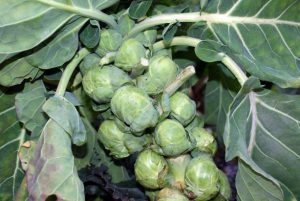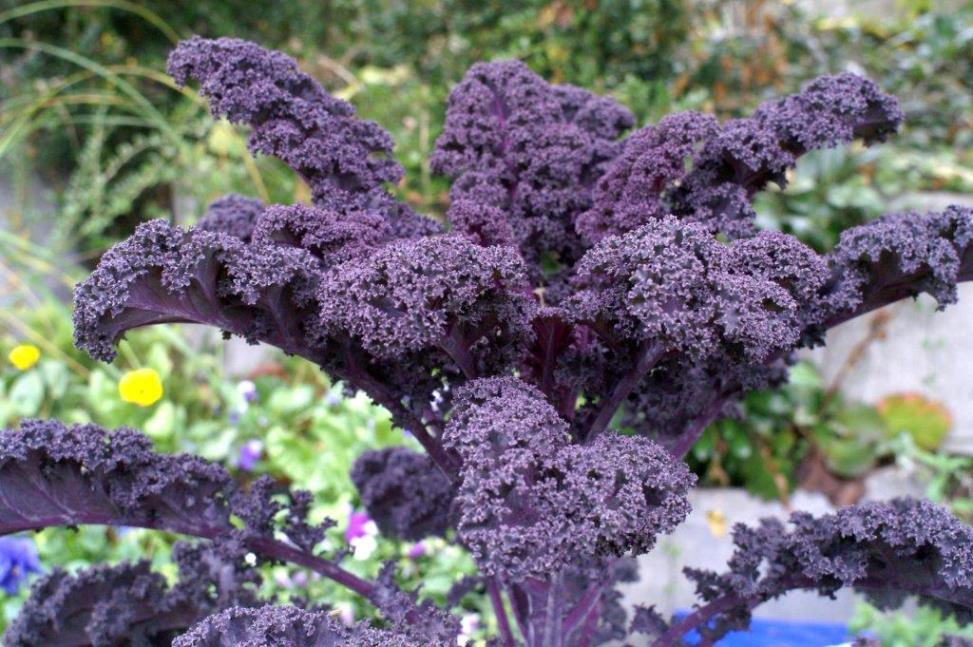Wild cabbage (brassica or cruciferous vegetables) is one of most important cultivated plants in Germany and is a member of the genus Brassica (Brassicaceae or Cruciferae family). There are many cultivars of the Brassica oleracea species which can be eaten by humans, such as Brussel sprouts, red cabbage, kale as well as types of radishes. [1]. Originally these types of brassica vegetables came from the Mediterranean region. Brassicas were used as medicinal plants in antiquity for treating injuries, gastrointestinal problems and infections and, indeed, these plants have maintained their significance in medicine and naturopathy through to modern day – cabbage leaf compresses are considered to have anti-inflammatory properties and soothe joint pain [2] [3].
Health and nutrition
The most important constituents in the majority of brassica vegetables are glucosinolates, 
which are a type of secondary plant substance. Findings from studies involving humans indicate that glucosinolates have antioxidative and immunomodulatory properties [4]. One of the most well-known glucosinolates is sinigrin. Sinigrin is the reason horseradish is so pungent, for example, and it is contained in Brussel sprouts as well as mustard seeds [1]. The concentration and composition of secondary plant substances can vary according to the type of brassica. Nevertheless, there seems to be a connection between an increased consumption of brassica vegetables and a lowered risk of developing prostate cancer [5]. The risk of developing lung cancer also seems to be reduced by eating more of these types of vegetable [1]. In addition to glucosinolates, brassicas also contain additional nutrients which are important for our health, for example vitamin A and K as well as large amounts of vitamin C, calcium and potassium [6]. Sauerkraut (a German dish of chopped pickled cabbage) is an excellent source of vitamin C, which develops from lactic acid fermentation when white cabbage is combined with salt. Kale, cauliflower, broccoli and Brussel sprouts are also good sources of vitamin C and are especially recommended at this time of year to prevent colds. The daily requirement of 100mg vitamin C for an adult is provided by just 80g Brussel sprouts or 100g kale [7].
In the kitchen:
Brussel sprouts and kale are regarded as typical winter vegetables and their full characteristic flavours only develop after the first frost. If these vegetables are cooked at a high temperature, the beneficial properties of the glucosinolates can be lost [ [1] [4]]. In this connection the myrosinase enzyme, which is responsible for splitting glucosinolates, is destroyed. [1]. Brassica vegetables are used in both traditional as well as modern, creative dishes. When the weather is cold, for example, a kale soup goes perfectly with seasonal vegetables such as potatoes, celery, carrots, shallots and leek. Turmeric provides a particularly tasty complement to kale. The ginger family of flowering plants (Zingiberaceae) are also characterised by their cancer-preventing properties. When ground, turmeric is therefore an ideal type of seasoning for kale soups [8]. Anyone who enjoys eating spicier foods can alternatively use grated horseradish. This gives the soup just the right amount of spice and in traditional medicine it is considered to promote digestion [9]. Red cabbage is an excellent vegetable to serve with game meat dishes such as a venison ragout. The red cabbage can be simmered slightly with apple, onion, cloves, bay leaves and wine. Cloves promote digestion and are known as plant antioxidants. The slight cancer-inhibiting effect of cloves is currently the subject of scientific discussion [10]. Cabbage rolls are also a warming and healthy dish which are perfect in the winter. To prepare this dish, remove the stem of the leaves of white cabbage or kale, stuff the leaves with a vegan mixture made of quinoa, onion and chestnuts, and then carefully tie the rolled leaves with string. A salad made from Brussel sprouts and lentils makes a quick and easy dish: the soaked and cooked lentils are fried in a pan in olive oil and herbs and steamed Brussel sprouts are then folded into the lentils. Lentils are a good source of protein and, like the sprouts, provide valuable macro and micronutrients such as fibre and calcium [6]. Brassica vegetables are therefore beneficial on account of the variety of positive properties and they also enhance winter dishes with their diverse range of flavours.
Discover the great flavours of brassicas for yourself – try making our recipes created by Michelin-star chefs:
- Leg of lamb, coriander gremolata, sweetheart cabbage and shiitake mushrooms – a recipe by Tohru Nakamura
- Shoulder of venison with sweetheart cabbage and quark – a recipe by Hans Haas
- Quark patties served on kale with mustard – a recipe by Thierry Thirvaudey
- Brussel sprout gratin with potatoes and chicken breast – a recipe by Thierry Thirvaudey

Pingback: BR feature: 'Schmidt Max and winter vegetables' | YOU ARE WHAT YOU EAT!